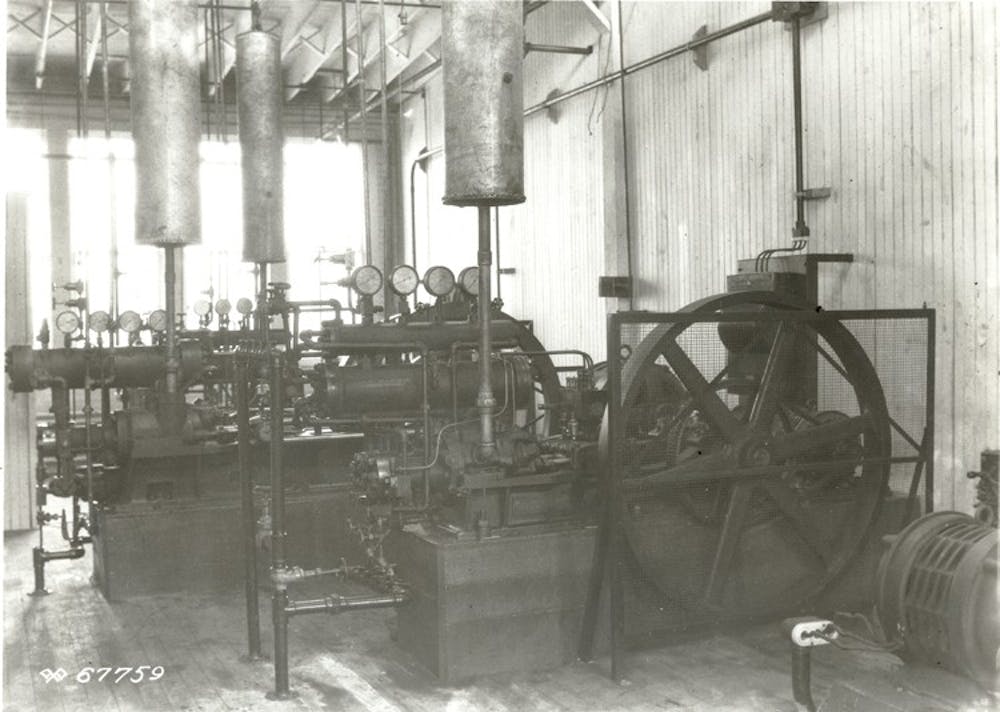This story is the third in a series investigating World War I-era chemical weapons and equipment buried under AU’s campus and in the Spring Valley neighborhood.
While U.S. Army scientists tested chemical weapons at AU during World War I, one engineer saw it all — even the experiments gone horribly wrong.
George Temple, head engineer of AU’s Motor Maintenance Department in 1918, said chemical research operations were so secretive, lab personnel were only allowed to enter their own labs.
But Temple’s job required him to work in every building.
“I saw everything,” Temple told The Eagle in 1965. “Of course, I couldn’t say anything.”
On one occasion, in the pitch-black interior of a smoky lab, three men were killed by a deadly dose of gas.
The men were hauled away on a cart, their skin “jiggling off their bones,” Temple said in an Eagle story.
Army officers asked for volunteers to help test experimental gases every morning during roll call, Temple said.
Temple volunteered seven times.
He developed huge silver-colored blisters on his arm after one experiment, blisters that took two months to heal.
Temple was one of the few volunteers who managed not to break the half-inch-high blisters.
“I was the guinea pig from then on,” he said.
One of Temple’s closest friends was a soldier stationed at Camp AU.
Though the soldier wasn’t a regular volunteer like Temple, he had seen his share of experiments.
“I got a bad dose of gas, and I know I’m not going to get well,” the soldier told Temple, The Eagle wrote.
Later, Temple learned his friend died from exposure to chemical weapons on campus.
“More men were killed by gas on the experimental side, than in actual use” on the battlefield, Temple said.
A senator and his family were also victims of AU’s experiments. Nathan Bay Scott, a retired senator from West Virginia, lived with his family on Ridge Road, about 400 feet from the testing grounds at AU.
Historian Joel Vilensky recorded the incident in his 2005 book about Camp AU, “Dew of Death.”
“On the morning of Aug. 3, 1918, the senator and his wife and sister were seated on the back porch enjoying the cool breeze that was blowing across the experimental field toward their home,” Vilensky wrote. “The senator noticed a dense cloud of yellowish gas slowly advancing toward their home ... All three smelled a faint odor and felt intense pain in their eyes.”
As a result, the senator’s eyes and throat were burned. The gas blistered his face.
Army officers later found that one of the pipes in a campus laboratory had ruptured, releasing almost 10 pounds of lewisite, the toxic gas that caused the senator’s injuries.
Many of the Army’s gas experiments were deadly then, but some experiments conducted on the South side of AU’s campus led to consequences the local community is still dealing with today.
See the fourth part of this series in The Eagle’s March 29 issue.
news@theeagleonline.com





